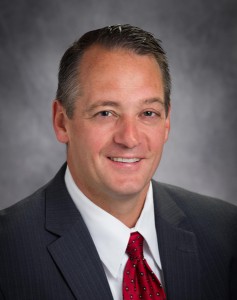Smart About Money: Time to save is now
By Nick MaffeoIn Martin Scorsese’s American Masters documentary about Bob Dylan, Dylan recalls how as a boy he and his classmates had to practice getting under their desks in case of a nuclear attack.
According to Dylan, “Our reality was fear that at any moment this black cloud would explode and everybody would be dead. We grew up with all that.”
Dylan was born in 1941, so let’s say that happened in about 1950 — nearly 70 years ago. Dylan is 78 years old and still touring. Despite all the fear and uncertainty and dire predictions in 1950, the world didn’t end then.
This past summer in The Wall Street Journal, a 27-year-old woman from New York City was quoted as saying she isn’t saving for retirement because “she doesn’t expect it to matter.” Basically, she is concerned that the world will end and she doesn’t see any point in saving for an “uncertain future.”
Here’s the reality: If the world ends, all bets are off anyway. But what if the world doesn’t end?
There’s something else besides dire predictions that has stopped many people from saving for retirement and joining the rapidly growing number of middle-class American 401(k) millionaires. It’s the chart that shows the powerful effect of compounded savings over decades.
Usually that chart shows someone starting saving in their 20s. And yes, being able to have 40-50 years of compounded savings growing tax-deferred is a huge advantage.
While some see that chart and become dedicated savers, other people in their 30s, 40s and 50s who haven’t saved much for retirement see it and unfortunately think it’s too late for them.
That’s not true. Basically, it’s never too late. Ten or 20 or 30 years of compounding are good too. Much, much better than not saving at all.
When it comes to making an effort to fully fund all available tax-advantaged retirement accounts, people of all ages say, “I can’t afford that right now. I’ll do it later.” And while there is always the necessity to address here-and-now financial needs, the truth is that for most of those people, the years go by and the “right time” to start saving never comes.
The secret of successful savers? Deciding to start saving and keep saving when it doesn’t feel like the right time at all. Because it never feels like the right time.
Social Security makes saving automatic and painless by steadily taking contributions out of paychecks before workers ever see the money. And while Social Security alone is not enough for most to be able to retire on, its automatic and steady “forced saving” model is a great idea you can adopt using automatic transfers. (Paying off a mortgage is another form of “forced saving” over decades that historically has been a solid wealth-builder.)
Pensions are still out there, but even people lucky enough to have a pension worry that substantially longer lifespans will make their “iron-clad” guaranteed pension less dependable, something retirees are already seeing happening.
The reality for most people is that having personal savings under your control providing several streams of income is what’s going to make the difference between a comfortable retirement and potentially years of facing difficult financial decisions.
Step 1? Decide to start fully funding your 401(k) and getting a free-money match if your employer offers one. Look for ways to save more as you go. After all, nobody thinks they started saving early enough. You can always stop contributing if it’s really a problem. And you are the only one who can do this for yourself.
As The Wall Street Journal concluded, “One thing that’s worse than not having a future is not being prepared for a future that comes to pass anyway.” Exactly!
Nick Maffeo is the President & CEO of Canton Co-operative Bank in Canton. Have a question? Email to submissions@thecantoncitizen.com.
Short URL: https://www.thecantoncitizen.com/?p=62564











